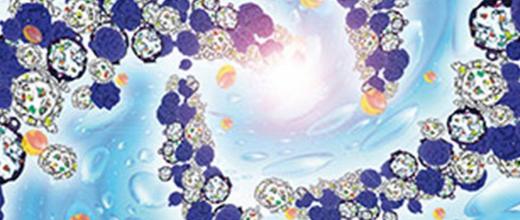By structuring our fundamental research around challenges and specifying scientific sub-challenges, it is possible to share scientific reasoning processes and pool low-TRL activities on the basis of common scientific objectives.
Collaborative research formats vary, from strategic framework agreements to simple research agreements. Collaboration methods can take a variety of forms:
- jointly supervised theses,
- post-doctoral research,
- temporary personnel exchanges (researchers and PhD students, for example),
- chair funding,
- collaborative projects, notably with public funding (ANR and H2020 in particular),
- partnerships within scientific interest groups,
- cooperation within the framework of joint research structures set up by partners,
- collaborative projects initiated by IFPEN and shared between academia and industry (joint industry projects - JIPs).
Concerning researcher exchanges within the context of collaborative projects, IFPEN’s researchers may supervise or support thesis work conducted in other laboratories, host researchers from outside laboratories or themselves go to work temporarily in other laboratories.
Collaboration within the framework of chairs involves IFPEN researchers becoming chair holders. These chairs make it possible to combine research activities of the highest level of excellence with the dissemination of knowledge to students. Chairs stand apart from other forms of partnership, both in terms of their associated prestige and excellence, and the long-term commitment involved (from three to five years).
Lastly, JIPs (Joint Industry Projects) are an original form of collaboration between IFPEN and industrial and academic partners. Their long-term research and development program is funded by several sponsors.
Original collaboration at IFPEN: JIPs
JIPs make it possible for IFPEN teams to develop and validate methodologies and technologies in line with concrete problems. As for the partners, they benefit from IFPEN’s expertise and the latest technological advances.
For example, within the context of scientific challenge No. 2, the Fugacity JIP, launched in 2019 and conducted in collaboration with the Institut de la Corrosion de Saint-Étienne (French Corrosion Institute in Saint-Etienne) and 10 industrial partners (BP, Chevron, ConocoPhillips, NOV, Petrobras, SZMF, Shell, TechnipFMC, TotalEnergies, Vallourec) is focused on the effect of high pressures (transient effects) on the penetration of hydrogen resulting from the steel corrosion process in the presence of CO2 and H2S. It follows on from the Oxygen JIP (Impact of oxygen on H2S cracking of steels), which successfully evaluated the impact of oxygen traces on steel corrosion in the presence of H2S while making it possible to anticipate steel corrosion and fracture risks in new energy technology fields, such as geothermal energy and biogas.
To address a problem identified by the European Federation of Chemical Engineering (EFCE), IFPEN has also joined forces with 6 industrial partners (BASF, Bayer, BP, Neste, Nouryon and Solvay) for the EleTher JIP. This JIP falls within the framework of scientific challenge No.1 and is dedicated to thermodynamic modeling. In particular, its results will lead to a better understanding of phenomena occurring during the processing of biomass, battery corrosion, usage and aging, and CO2 capture and storage.









